Release Notes
Rust crate to implement at least parts of the PBRT book’s C++ code:
https://github.com/wahn/rs_pbrt
Current Rust documentation:
https://www.janwalter.org/doc/rust/pbrt/index.html
v0.2.0
Let’s first show the latest image:
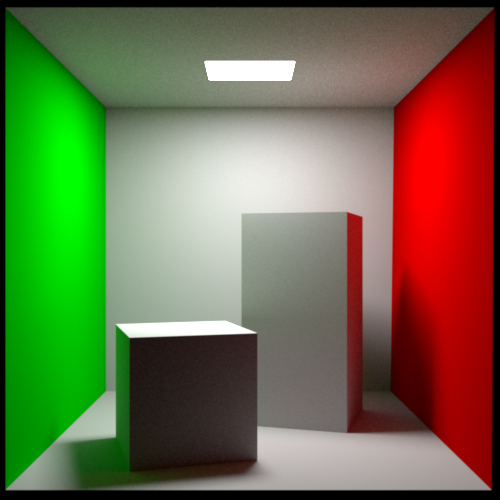
This was rendered using path tracing. Since my last post a lot of things changed. First of all I started implementing a parser using a crate called pest. The parser isn’t finished yet, but I provide some sample scenes which can be used and should render. The image above was for example rendered by the following command line ($ is the command prompt):
$ ./target/release/examples/pest_test -i assets/scenes/cornell_box.pbrt
Cloning the Repository
To compile the executable mentioned above you first need to clone the repository:
$ git clone https://github.com/wahn/rs_pbrt.git
Rustup
The easiest way to install Rust is rustup:
$ curl https://sh.rustup.rs -sSf | sh
I first started using some Rust features which require Rust nightly when I started working on the parser, but currently even the library (API) needs it:
$ rustup install nightly
$ rustup default nightly
info: using existing install for 'nightly-x86_64-unknown-linux-gnu'
info: default toolchain set to 'nightly-x86_64-unknown-linux-gnu'
nightly-x86_64-unknown-linux-gnu unchanged - rustc 1.20.0-nightly
Compiling
After switching to the nightly version you should be able to compile:
$ cargo test --release
Compiling pest v0.4.1
...
Compiling image v0.15.0
...
Finished release [optimized] target(s) in 113.58 secs
Running target/release/deps/pbrt-e363c28050f255bc
running 0 tests
test result: ok. 0 passed; 0 failed; 0 ignored; 0 measured; 0 filtered out
Doc-tests pbrt
running 16 tests
test src/lib.rs - (line 166) ... ok
test src/lib.rs - (line 24) ... ok
test src/lib.rs - (line 204) ... ok
test src/lib.rs - (line 112) ... ok
test src/lib.rs - (line 241) ... ok
test src/lib.rs - (line 277) ... ok
test src/lib.rs - (line 301) ... ok
test src/lib.rs - (line 319) ... ok
test src/lib.rs - (line 373) ... ok
test src/lib.rs - (line 344) ... ok
test src/lib.rs - (line 412) ... ok
test src/lib.rs - (line 462) ... ok
test src/lib.rs - (line 53) ... ok
test src/lib.rs - (line 551) ... ok
test src/lib.rs - (line 596) ... ok
test src/lib.rs - (line 84) ... ok
test result: ok. 16 passed; 0 failed; 0 ignored; 0 measured; 0 filtered out
Rendering
Now you are ready to render:
$ ./target/release/examples/pest_test -i assets/scenes/cornell_box.pbrt
...
Rendering finished
Converting image to RGB and computing final weighted pixel values
Writing image "pbrt.png" with bounds Bounds2 { p_min: Point2 { x: 0, y: 0 }, p_max: Point2 { x: 500, y: 500 } }
done.
This should take only a couple of seconds. Don’t worry if your resulting image will look a lot more noisy. To render the exact same image as above you have to tweak some settings in the scene descrition file (cornell_box.pbrt):
Sampler "lowdiscrepancy" "integer pixelsamples" [512]
PixelFilter "gaussian" "float xwidth" [2.000000 ] "float ywidth" [2.000000 ]
Integrator "path"
Direct Lighting
To render without global illumination you can use the direct lighting integrator:
Integrator "directlighting" "integer maxdepth" [10]
Don’t forget to use lower pixelsamples settings (maybe 8).
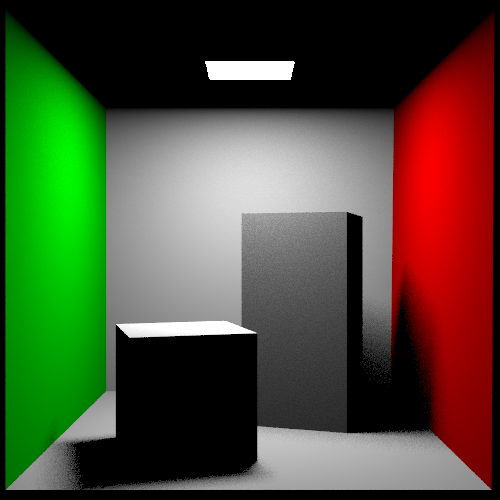
Ambient Occlusion
To render with ambient occlusion switch (again) the integrator:
Integrator "ambientocclusion"

Other Scenes
There are a couple of other scenes which can be rendered from the command line by parsing a scene description file, e.g. a teapot illuminated by an area light:
$ ./target/release/examples/pest_test -i assets/scenes/teapot-area-light.pbrt
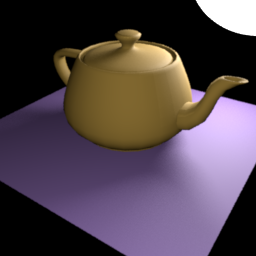
Variations of the Same Scene
From the time where I didn’t have a parser there exists an executable which uses only the API (see also Wiki):
$ ./target/release/examples/pbrt_spheres_differentials_texfilt --help
Usage: ./target/release/examples/pbrt_spheres_differentials_texfilt [options]
Options:
-h, --help print this help menu
-c, --checker use procedural texture
-i, --image use image texture
-n, --none use no texture
-m, --matte use only matte materials
-v, --version print version number
Checker
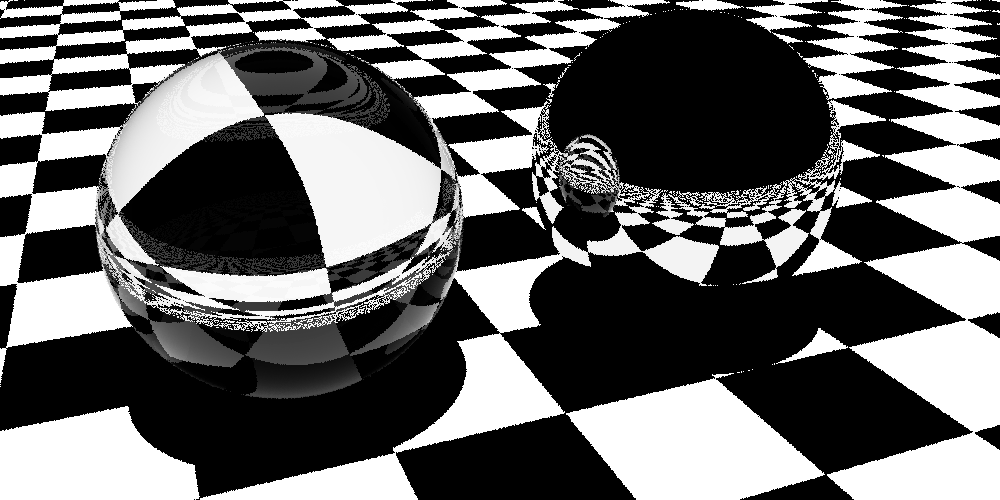
Image

No Texture

Matte
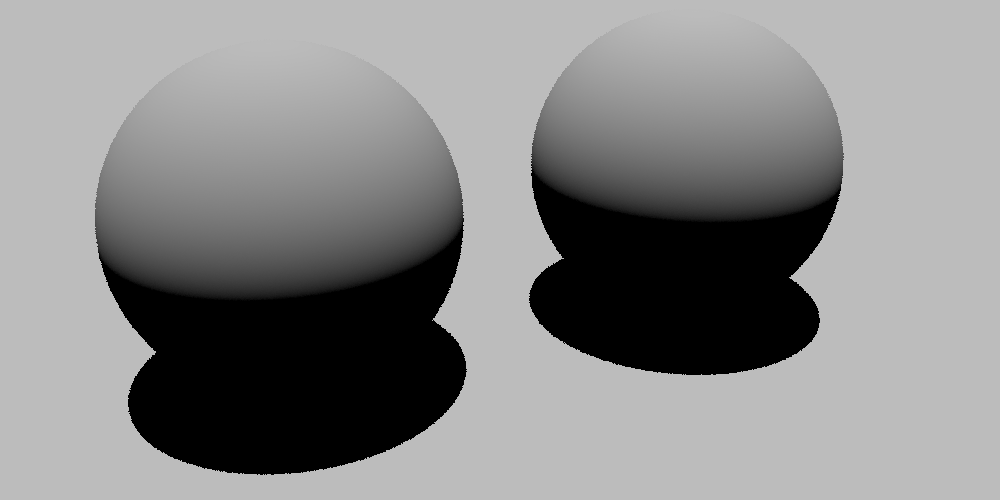
Contribute
If you want to contribute to this project contact me via the email provided on the imprint page.
